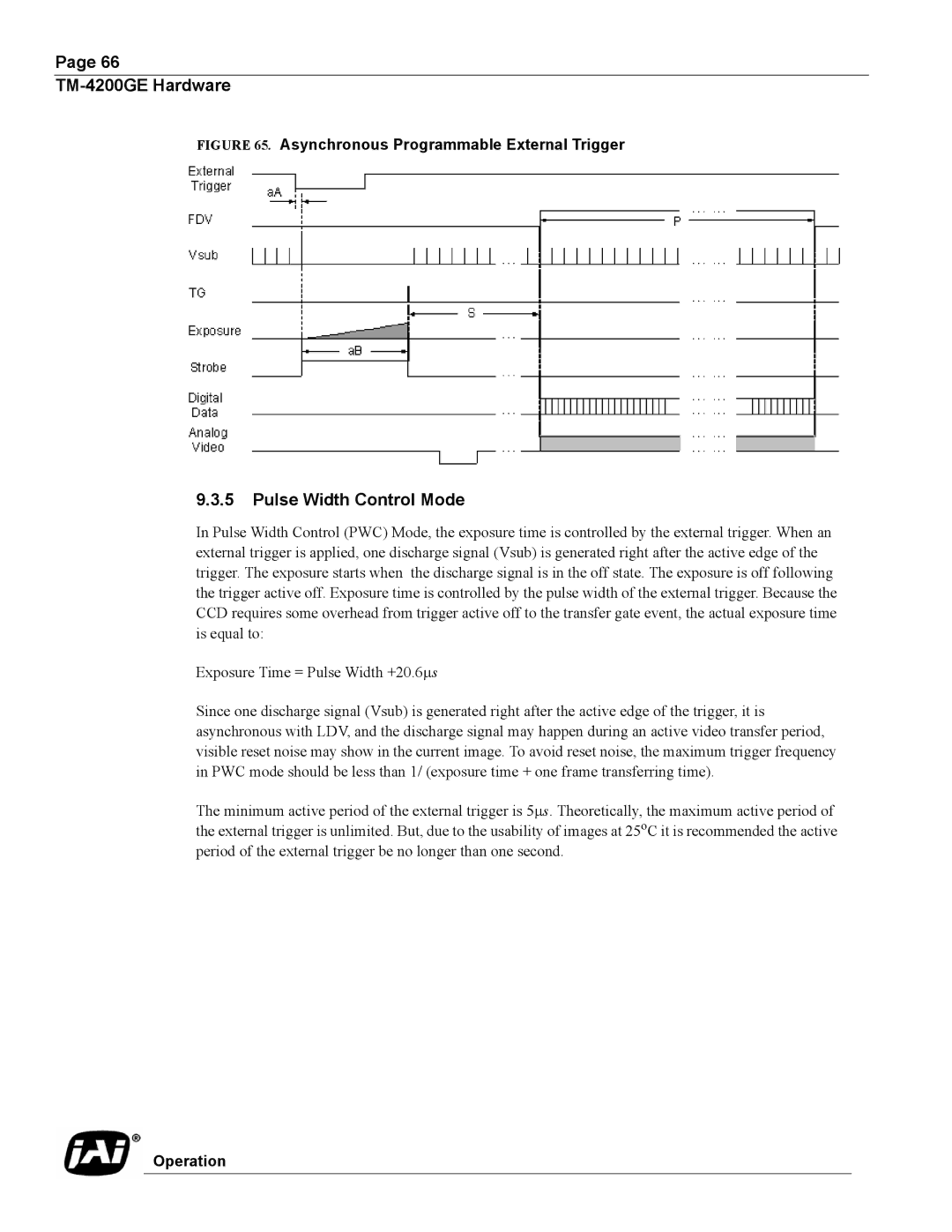
Page 66
TM-4200GE Hardware
FIGURE 65. Asynchronous Programmable External Trigger
9.3.5Pulse Width Control Mode
In Pulse Width Control (PWC) Mode, the exposure time is controlled by the external trigger. When an external trigger is applied, one discharge signal (Vsub) is generated right after the active edge of the trigger. The exposure starts when the discharge signal is in the off state. The exposure is off following the trigger active off. Exposure time is controlled by the pulse width of the external trigger. Because the CCD requires some overhead from trigger active off to the transfer gate event, the actual exposure time is equal to:
Exposure Time = Pulse Width +20.6μs
Since one discharge signal (Vsub) is generated right after the active edge of the trigger, it is asynchronous with LDV, and the discharge signal may happen during an active video transfer period, visible reset noise may show in the current image. To avoid reset noise, the maximum trigger frequency in PWC mode should be less than 1/ (exposure time + one frame transferring time).
The minimum active period of the external trigger is 5μs. Theoretically, the maximum active period of the external trigger is unlimited. But, due to the usability of images at 25oC it is recommended the active period of the external trigger be no longer than one second.
